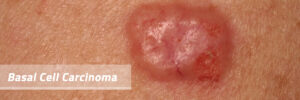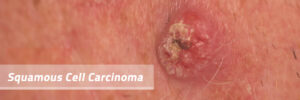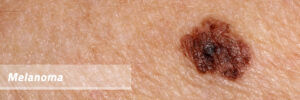Basal Cell Carcinoma

Basal Cell Carcinoma (BCC) is the most common cancer diagnosed in the United States. In fact, 1 out of 4 fair-skinned adults will develop a BCC in their lifetime. It most commonly appears as a pearly, pink bump on the skin that bleeds and never fully heals. BCC is a slow growing tumor that spreads locally, damaging tissue as it invades. Rarely, BCC can metastasize to distant sites and be life threatening.
A majority of BCCs occur in sun exposed skin and are directly related to long term sun exposure. Fair-skin individuals with a tendency towards sun burns are at highest risk. BCC can also occur in skin that has not had significant sun exposure, although this is less common.
Treatment Options
At the Dermatology Center of Canyon County, we use a variety of treatment options dependent on the type, size, and location of the cancer. Some examples of treatment strategies we use include:
Mohs Micrographic Surgery: Offers the highest cure rate of any treatment for non-melanoma skin cancer while also minimizing the removal of surrounding healthy skin and leaving the smallest wound or scar possible.
Surgical Excision: Offers excellent cure rate and is the “gold standard” treatment for many tumors.
Electrodessication and Curettage (ED&C): This procedure involves scraping the tumor from the skin followed by cautery of the base. It is most commonly used for non-invasive forms of SCC.
Topical Medications: Topical immunomodulatory agents such as Imiquimod, or topical chemotherapy drugs such as 5-fluorouracil can be used in select tumors alone or in combination with surgery.
Radiation Therapy: Most frequently used for tumors not easily treated with surgery or other methods listed above.
Your DCCC provider will advise you of your best options for diagnosing and treating BCC.
Preventative Measures
The main preventative measure for BCC as well as for all forms of skin cancer is proper protection from the sun with adequate clothing, a hat and broad-spectrum sunscreen of SPF 30 or higher on all sun-exposed skin. Regular skin examinations with your dermatologist/dermatology provider enable early diagnosis and treatment of BCC and the best chance of cure.

